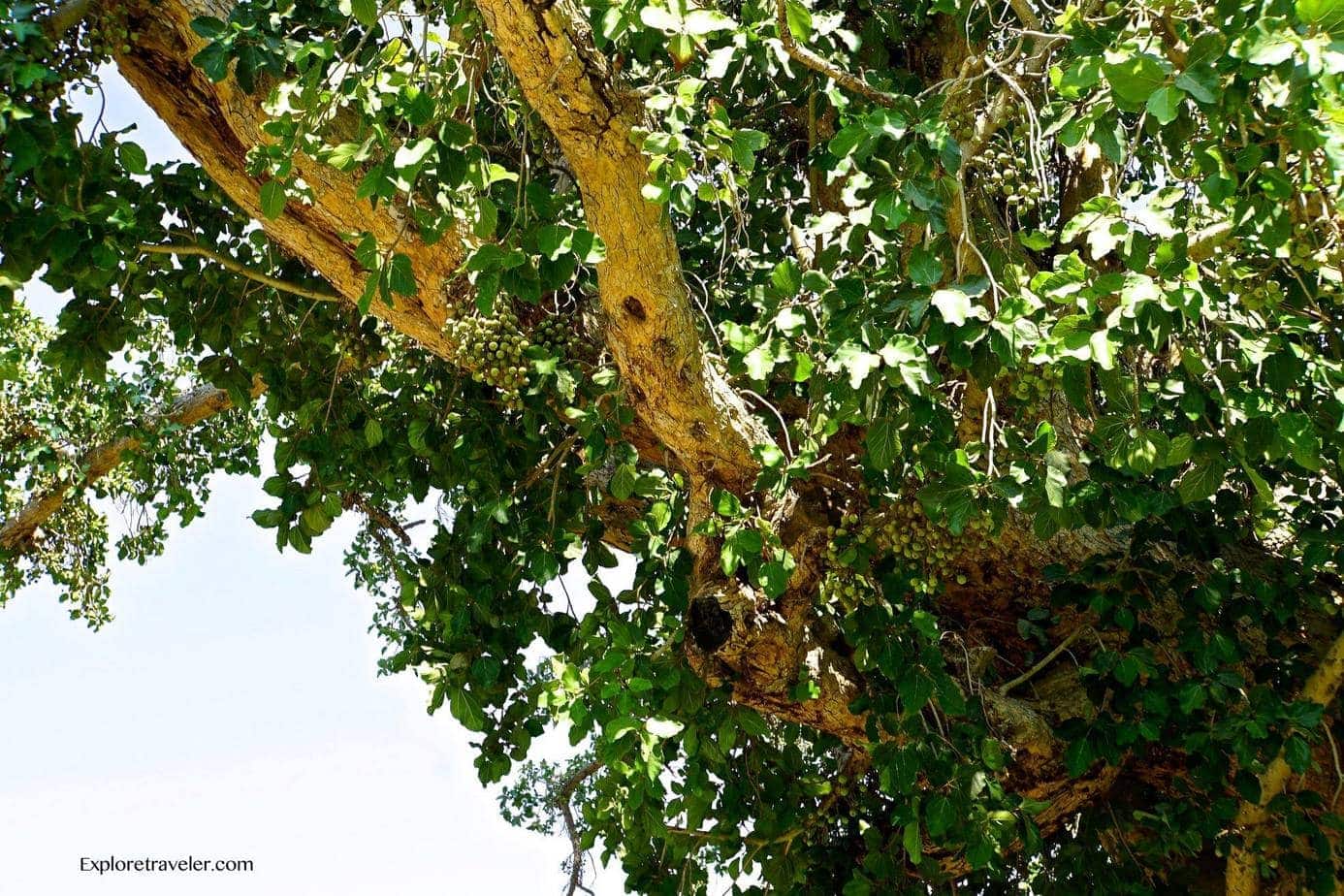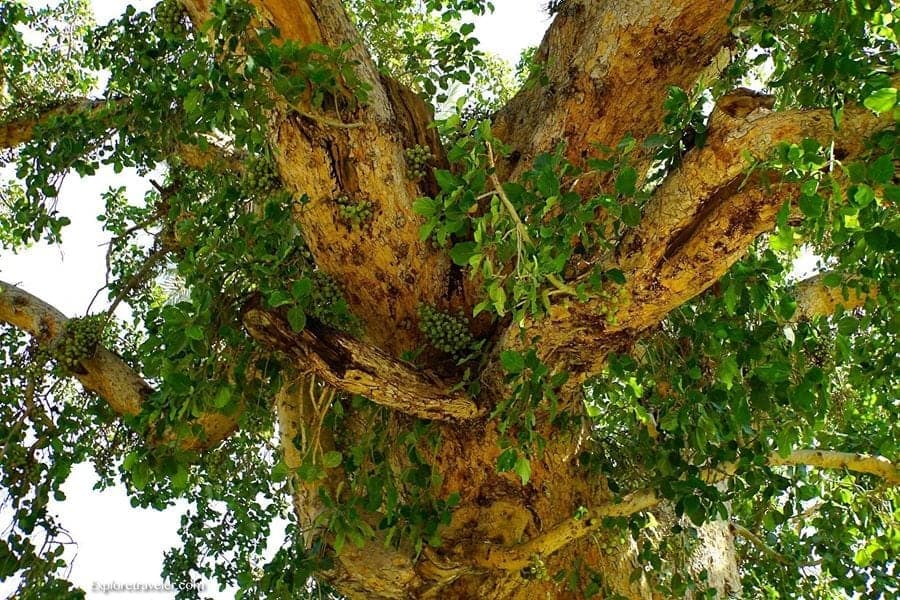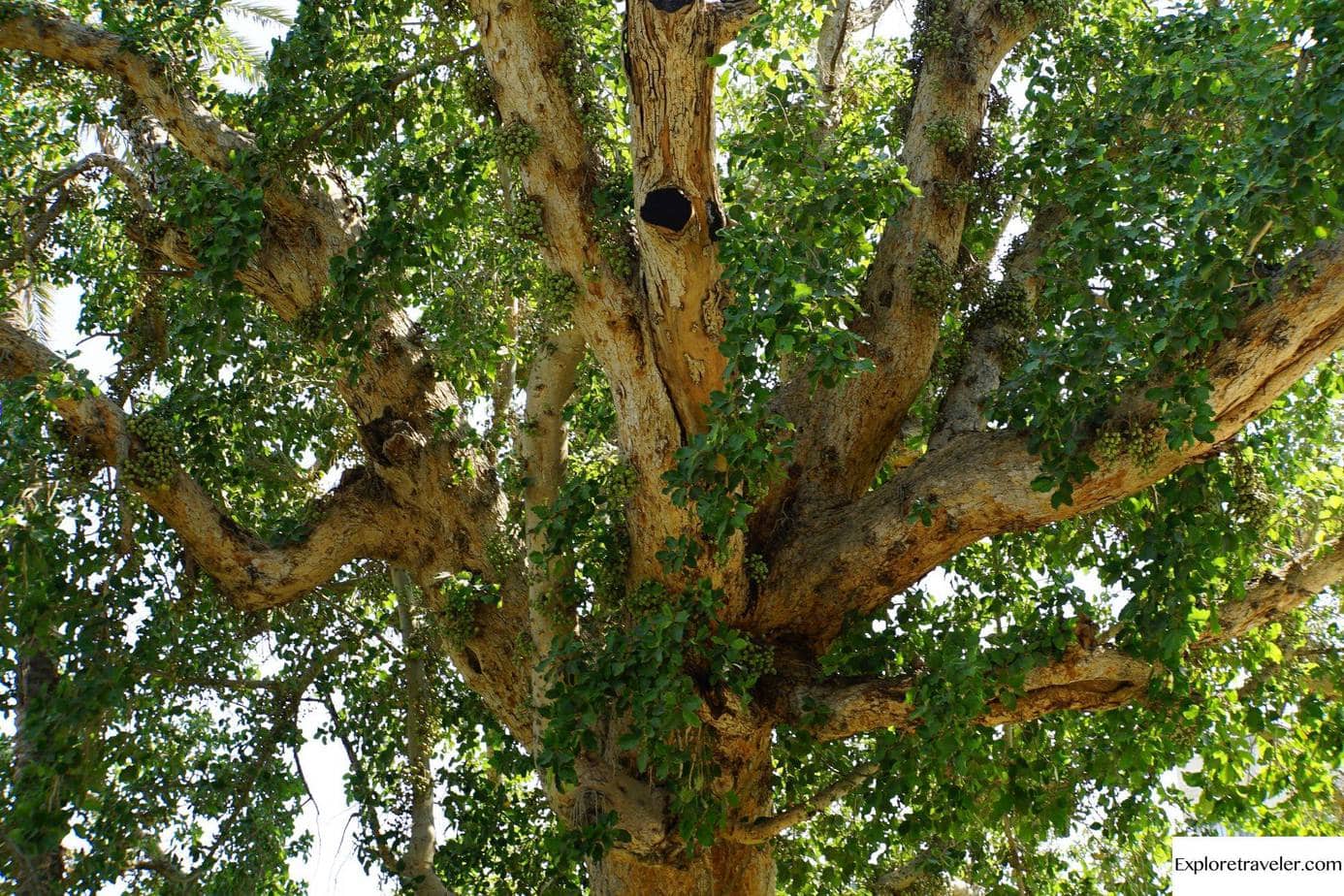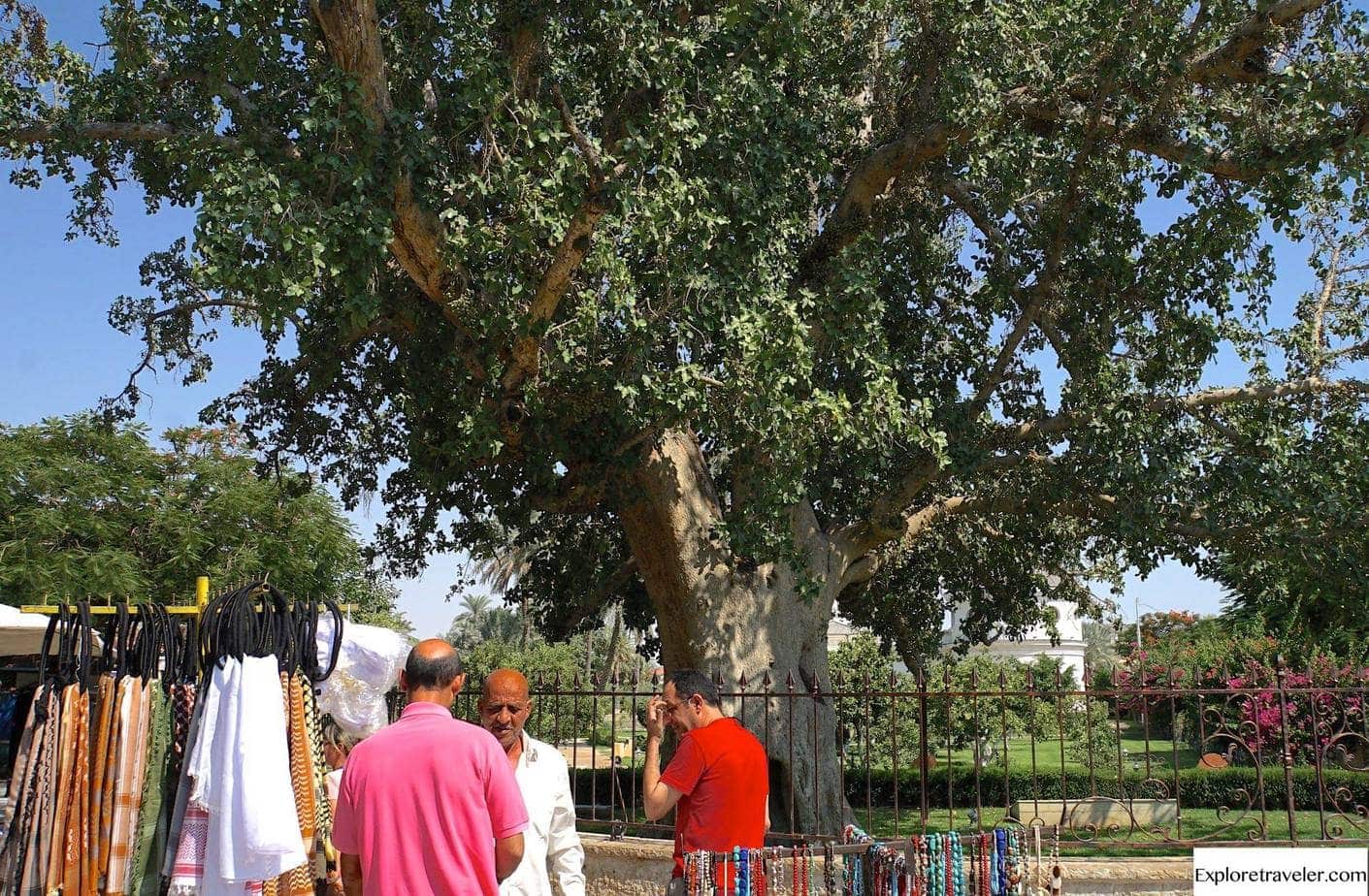Ancient Sycamore Tree in Israel with Video
The Sycamore Tree, an ancient species of the Fig Tree, is amazing. It is also related to the Mulberry Tree. There are several species of the Fig Tree that comes under the Sycamore Tree. This particular species of the Sycamore Tree is sometimes spelled Sycamore, for distinction from the other Fig species. This species of the Sycamore Tree is found in Madagascar, Egypt, and Israel. This gigantic Sycamore has been cultivated since ancient times.
“First let’s get some basics about this tree laid out. The Sycamore tree is a deciduous tree that belongs to the plane tree family. This tree has originated from Europe, but it has been taken all around the world now.
Table of Contents
The Sycamore Tree in Israel
They differ in size, the color of the bark and leaves, and habitats from where they can be found. Sycamore tree requires very fertile, moist, and well-drained soil. Full sun is also needed for this tree to be successful in development. It normally grows near streams, riverbanks, and lakes. People typically cultivate sycamore for ornamental purposes, but it is well known as a source of high-quality wood.
The variety of Sycamore Tree in Israel is an extremely large tree. Though the trunk is similar to the Olive Tree, you can identify them by their leaves. It has a beautiful thick and knotted trunk and very large scaly leaves. These huge large leathery leaves are thought to have possibly been the fig leaves referred to in the book of Genesis. In Genesis 3:7 it says: “Then the eyes of both of them were opened, and they realized they were naked; so they sewed fig leaves together and made coverings for themselves.” Scientists, archaeologists, and religious scholars all seem to agree that this is the most likely species of the Fig Tree that the book of Genesis could have been referring to. It is the only species of the Fig Tree that is native to the Middle East. It is also the only Sycamore Tree that has larger than normal leaves.

The Sycamore Tree in Ancient Egypt
The remains of the Sycamore Tree in Egypt have been found to date back as far as 3000 BC. These gigantic trees were used by the Egyptians to carve out coffins for the mummies in Egypt. It was the only tree that had the size needed to make these coffins. In ancient Egypt, the Sycamore Tree was called the “Fig of Pharaoh.” Egypt itself was referred to as “the land where the Sycamore Tree blooms.” The Sycamore Tree played major importance in the food supply of ancient Egypt. Not only was the wood used, but all parts of the tree were also cultivated. The fruit was good to eat! The leaves made a healing tea! The sap made a sweet syrup! The gigantic trunks provided refuge. The “Fig of Pharaoh” was an amazing resource for the ancient Egyptians.
Hebraic Writings and the Sycamore Tree
In ancient Hebraic writings, the Sycamore Tree symbolized “regeneration.” When transplanting a Sycamore Tree, you must do it quickly, as the roots dry out very rapidly. On the other hand, the Sycamore Tree has an amazing ability to regenerate itself. If the sand covers one of its branches, it will establish new roots and reproduce a whole new tree. During ancient times, the Sycamore tree in Israel considered extremely important. In the time of David, we see that he appointed a special overseer for the Olive and Sycamore Trees (1 Chronicle 27:28).
Flowering and fruiting of the ancient Sycamore Tree in Israel occurred during the hot summer months. Though it was not unusual to get up to 6 crops a year from each tree (Talmud writings). The figs of the Sycamore Tree were eaten in ancient times. During the time of David, the Sycamores were considered one of the sources of food that was destroyed by the plagues in Egypt. See Psalms 78:47. In modern times, there are many other Fig Trees with a better quality of fruit. For this reason, the Sycamore is not often used in modern Israel.
The Sycamore Tree and World Culture
In the religion of the Kikuyu Tribe of Kenya, there was only one God. They referred to Him as Ngai. Many of the sacrifices were similar to the ones done by the Israelite’s in ancient times. The Kikuyu Tribe did all their sacrifices under the Sycamore Tree. Both the Sycamore and the Fig Tree were considered sacred. The Olive Tree was considered sacred for women.
In other cultures, the wood of the Sycamore Tree was used for utensils, bowls, baskets, cutting boards, etc. The sap of the Sycamore can be used for syrup, similar, but of a lower quality than the sugar maple. The large leaves are used to wrap food for cooking and like fig leaves, can be used for tea. The fruit is good to eat, but modern fig trees have a higher quality fruit.
The amazing Sycamore Tree has been important throughout the time of the prophets. It appears in many of their writings throughout the ages. There does not appear to be any age when the Sycamore was not important for something. Its leaves are a source of medicine. Its wood make sturdy kitchen vessels. Its sap makes a sweet syrup! Its beautiful trunk is amazing. In times of emergency, people have sought refuge inside this trunk. This amazing trunk is hollow in the larger trees. What other trees in the history of man can be used for so many different things? The ancient Sycamore tree of the Middle East is one of the most outstanding trees of all time.
The Jericho Sycamore Trees Of Today
This particular tree is still standing within the city of Jericho, and the tourist peddlers are out in force. Some of the items for sale can be unique and you should consider taking a few treasures home. We had plenty of time, and there are some interesting places to see while you’re in the area.
Editors Note: This particular tree is a relative of a much older tree described within the original text of Biblical scriptures. The local Jericho Palestinians called it the Zacchaeus tree and said this tree was a generational seedling that could be traced back to the same tree Zacchaeus had climbed. Since this comes from oral history we cannot confirm this but thought it should be mentioned. These trees can live up to 250 years so I assume all of the Sycamore trees are biologically related to each other.
Jericho And The Ancient Sycamore Tree
Discover the Sycamore Tree of the Ancient World.
Jericho is a living, vibrate small Palestinian town in the Jordan Valley. It is the world’s oldest town. The town dates back to 8,000 BC. It has always been occupied since ancient times. It is also the lowest town in the world. Jericho is 780 feet below sea level. It is a Jordan Valley Oasis! This is the year it is about to get another facelift. They are bringing back into focus the beautiful Sycamore Tree that Zacchaeus climbed to get a better look at Jesus. We read about this encounter in the Gospels.
“And Jesus entered and passed through Jericho. And behold, there was a man named Zacchaeus, who was the chief among the tax collectors, and he was rich. And he sought to see Jesus … but could not because of the crowd, because he was of short stature. And he ran ahead and climbed up into a sycamore tree to see him: for he was to pass that way. And when Jesus came to the place, he looked up, and saw him, and said unto him, Zacchaeus, make haste, and come down; for today I must abide at thy house.” Luke 19:1-5
Jericho’s Sycamore Tree for years has been tucked away on a side street. Until 2010 it was kept out of the eyes of tourists. They came, took a picture, and left! But that has been changing. It has now become the main attraction of a museum complex. This complex opened in 2010 and each month sees new additions. This is the birthday of Jericho and this ancient Sycamore Tree is about to be the star attraction.
Palestine is being promoted to the world as a place to come to. This mega venture also includes future plans for a major 5 Star Resort to be built on the banks of the Dead Sea. In the future, there is the hope of building a major airport in the area. The town is busy cleaning and painting. The yards are being cut and manicured. This magnificent Palestinian town is getting a facelift. It is getting ready for another mega birthday celebration. Happy Birthday, Jericho!
The road into Jericho has always been a country road, complete with potholes! Now it is a four-lane highway! Before there was an Israelite check-point going into the town. Now everyone comes and goes freely! This no longer slows down traffic and tourists are not deterred from coming. Things are happening and Jericho is sharing another one of her treasures with the world. Welcome her newest start attraction…. the Sycamore Tree.
The history of the Sycamore Tree in the area is on display in the new Museum. Local restaurants gear up for the added pilgrims that will be coming into the area. No longer is the tree that Zacchaeus climbed being regulated to the side street. The story of how Zacchaeus climbed the Sycamore Tree so he could see Jesus, is now being told to the world. This is another birthday celebration of the oldest town in the world, and Zacchaeus’ story and the tree he climbed, will be the center of attention. Palestine invites you to join them in Jericho, at the foot of….. the Sycamore Tree.
Jericho And The Ancient Sycamore Tree
Sycamore Tree Jericho
Within the Tel Jericho area complex zone there are several areas of interest and vendors who sell unique Palestinian handicrafts. Tel Jericho is an archaeological site in the northeastern area of Jericho also known as er-Riha, Yeriho, Tel es-Sultan, and Eriha. The tel mound is located today within the UNESCO World Heritage Site operated by the Palestinian Authority West Bank. The site is located in the Jordan Valley 10km north of the Dead Sea, and it is close to the Ein es-Sultan spring. The known term of the fountain of Elisha comes from Biblical reference and can be found close by. You will need special permission to view the very ancient well, and the town’s water supply.
Fountain Of Elisha in Jericho
The fountain of Elisha, an oasis in the midst of old Jericho, is beautiful and clear. As you near the spring, you notice it teeming with fish. This is where an immense volume of clear warm water flows. It is shaded by an ancient lone fig tree. In other places, you will see small waterways where the local people direct the water. In this way, the crops are watered to this day. In the above photo, we see this spring where it exits the ground at the pumping station. The pumping station protects this ancient flowing spring. It pumps fresh, clean water into modern Jericho. The fountain of Elisha is still sweet! You can see how crystal clear it is! These magnificent areas are located in Jericho, a city of palm trees from ancient times (Deuteronomy 34:3).
You can learn more by viewing this post: The Fountain of Elisha
“Jericho is believed to be one of the oldest cities in the world that has remained permanently inhabited from the 10th millennia BC. The site of Tel Jericho is identified with ancient Jericho which is mentioned in historical documents and the Bible. Today at the site visitors can see the excavated structures which once formed the core of Jericho city.
This area of Tel Jericho has a tremendous amount of information and areas of historical interest. If you would like to learn more about this area, and our time there you can read this recent post.
Middle East Adventure: Week One Jerusalem, Jericho, Sea of Galilee
The Trees in Ancient Israel
Yes, a long time ago it was part of that old empire. Today it is a part of the Palestinian Territory
controlled by the Fatah faction of the Palestinian National Authority. Before it was of Ancient Israel it was even an early Canaan city with people living there 11,000 years ago or maybe even earlier. Jericho has been taken by many empires, and its geography has made it a jewel for every ancient empire to control. We are more interested in history and not modern-day politics. But yes we are aware of the sensitivity of the subject when used in modern terms. I would love to go back and do some research within the archaeology of this site and hope to one day be able to get the funding to do so.
Also, a further study into how this tree is perpetrated into the area if it can be known alongside the movement of the human race may shed a tremendous amount of research. It is the many forms of agriculture and their uses that have set the sycamore apart from other agricultural trees.
For information on caring for your sycamore tree see this great article at gardening know-how Sycamore Tree Care
Basic Sycamore Tree FAQ Facts:
What is the Name of the Sycamore Tree in the United States?
North American Sycamore
What is the Name of the Sycamore Tree in Europe?
British sycamore
What is the Name of the Sycamore Tree in Israel?
Middle Eastern sycamore.
How Big Does the Sycamore Tree Get?
Sycamore can reach 98 to 130 feet in height and 4.9 to 6.6 feet in diameter.
What Color is the Sycamore Tree Bark?
The Bark of sycamore has a whitish and reddish-brown patched surface.
What Does the Sycamore Bark Look Like?
The mottled bark has irregular “flakes” creating the impression of an illness.
Why Does the Sycamore Tree Called by the Name Sycamore?
The name “sycamore” probably refers to the “sick” appearance of the tree.
What do the Sycamore Tree Leaves Look Llike?
Sycamore has broad, five-lobed leaves with pointed tips. Leaves are toothed on the edges. Dark green leaves change color into bright yellow at the beginning of the autumn. Soon after, the tree sheds them.
What is the Shape of the Sycamore Tree?
Sycamore has a rounded, dome-shaped crown that is extremely dense. Twisted branches provide shelter for the small mammals such as squirrels and various birds (during the nesting season)
How Does the Sycamore Tree Reproduce?
Sycamore is a monoecious plant which means that it produces individual male and female flowers on the same plant. Flowers are yellowish-green, arranged in drooping clusters. Sycamore blooms during April. Flowers produce nectar which attracts bees, main pollinators of this species.
What Does the Sycamore Tree Fruit Look Like?
The fruit of sycamore is brown, woody balls that can be seen on the tree starting from October. They remain on the tree during the winter. Fully ripe fruit splits to release seed.
How Does the Sycamore Tree Produce Seeds?
The seed of sycamore is arranged in V-shaped pairs and equipped with wings that facilitate dispersal by wind. One tree produces up to 10.000 seeds per season.
What is the Sycamore Tree Seed Called?
Sycamore seed is known as “helicopters” because of their wings that rotate similar to helicopter’s propeller on a wind.
What is the Sycamore Tree Known for During the United States War of Independence?
One old sycamore tree provided protection for the large troops of General Washington during the battle on the Brandywine Battlefield Park in Pennsylvania in the 18th century. Ever since the sycamore tree is a symbol of hope and protection in the USA.
What Does the Sycamore Tree Symbolize?
Sycamore also symbolized strength, eternity and divinity.
What is Sycamore Tree Wood Used for?
The wood of sycamore is used in the industry of furniture, musical instruments, kitchenware, and butchers’ blocks.
Why is the Sycamore Tree Used in Urban Environments?
Sycamore is often planted in urban areas because of its ability to tolerate air pollution and provide shade.
Why is the Sycamore Tree Used as a Windbreak?
Sycamore also serves as windbreak thanks to the strong root system that holds the plant firmly attached to the ground in areas with strong winds.
How Old Can a Sycamore Tree Get?
Sycamore can survive from 150 to 600 years in the wild.” (1 Softschools)
Sycamore Tree In Ancient Israel
- Softschools. “Sycamore Tree Facts.” Softschools.com, Softschools, www.softschools.com/facts/plants/sycamore_tree_facts/1209/.







